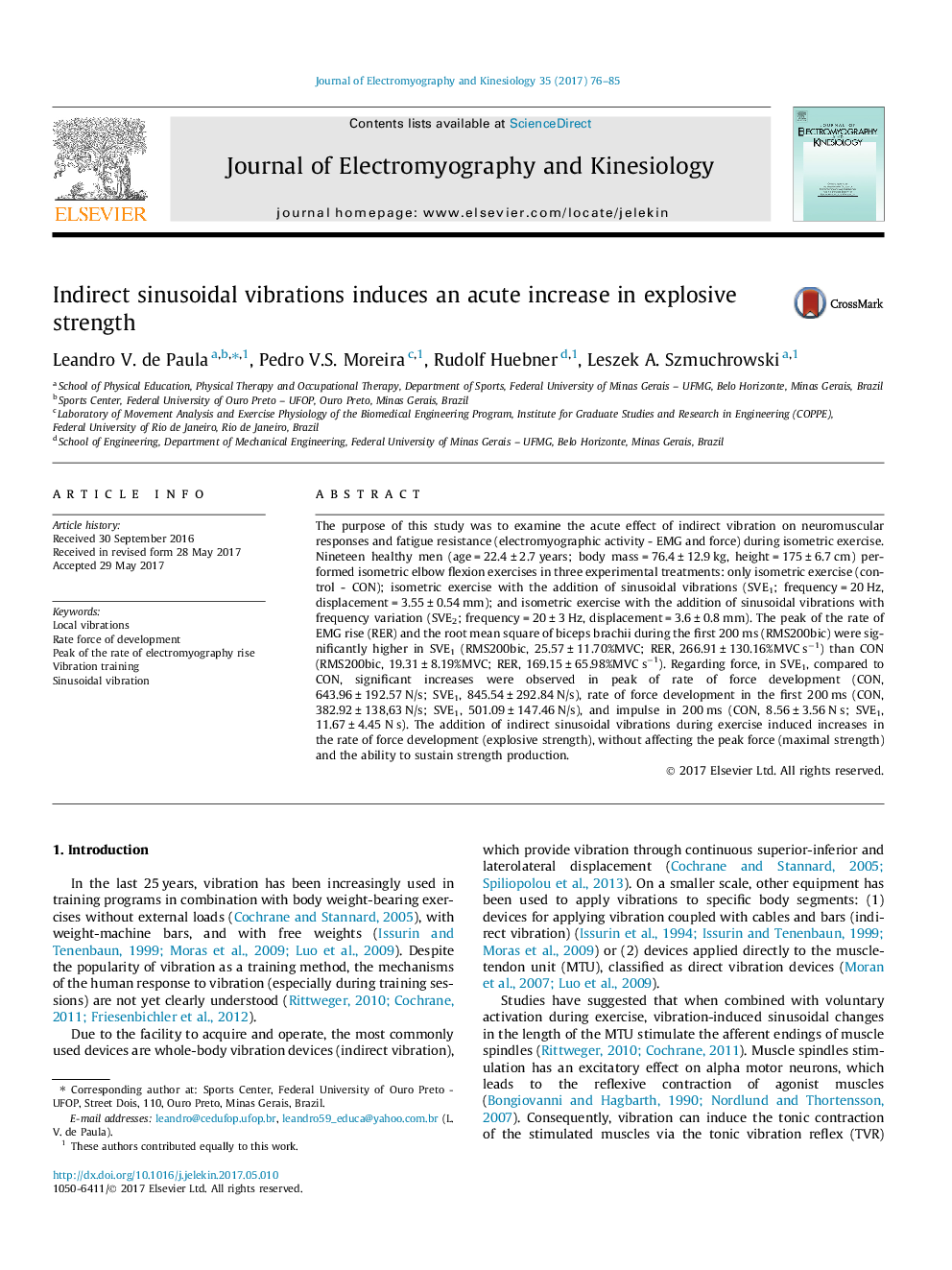| Article ID | Journal | Published Year | Pages | File Type |
|---|---|---|---|---|
| 5709507 | Journal of Electromyography and Kinesiology | 2017 | 10 Pages |
Abstract
The purpose of this study was to examine the acute effect of indirect vibration on neuromuscular responses and fatigue resistance (electromyographic activity - EMG and force) during isometric exercise. Nineteen healthy men (age = 22.4 ± 2.7 years; body mass = 76.4 ± 12.9 kg, height = 175 ± 6.7 cm) performed isometric elbow flexion exercises in three experimental treatments: only isometric exercise (control - CON); isometric exercise with the addition of sinusoidal vibrations (SVE1; frequency = 20 Hz, displacement = 3.55 ± 0.54 mm); and isometric exercise with the addition of sinusoidal vibrations with frequency variation (SVE2; frequency = 20 ± 3 Hz, displacement = 3.6 ± 0.8 mm). The peak of the rate of EMG rise (RER) and the root mean square of biceps brachii during the first 200 ms (RMS200bic) were significantly higher in SVE1 (RMS200bic, 25.57 ± 11.70%MVC; RER, 266.91 ± 130.16%MVC sâ1) than CON (RMS200bic, 19.31 ± 8.19%MVC; RER, 169.15 ± 65.98%MVC sâ1). Regarding force, in SVE1, compared to CON, significant increases were observed in peak of rate of force development (CON, 643.96 ± 192.57 N/s; SVE1, 845.54 ± 292.84 N/s), rate of force development in the first 200 ms (CON, 382.92 ± 138,63 N/s; SVE1, 501.09 ± 147.46 N/s), and impulse in 200 ms (CON, 8.56 ± 3.56 N s; SVE1, 11.67 ± 4.45 N s). The addition of indirect sinusoidal vibrations during exercise induced increases in the rate of force development (explosive strength), without affecting the peak force (maximal strength) and the ability to sustain strength production.
Keywords
Related Topics
Health Sciences
Medicine and Dentistry
Orthopedics, Sports Medicine and Rehabilitation
Authors
Leandro V. de Paula, Pedro V.S. Moreira, Rudolf Huebner, Leszek A. Szmuchrowski,
